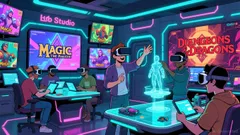Boeing's Starliner spacecraft program has entered a new phase with the appointment of Mark Nappi as the new vice president and program manager, replacing John Shannon. This strategic move comes after NASA's decision to return the Starliner capsule to Earth uncrewed, leaving astronauts Butch Wilmore and Suni Williams on the International Space Station (ISS) until February 2025. As Boeing navigates the challenges and setbacks of the Starliner program, Nappi's leadership could be the catalyst for a turnaround.
Nappi, a seasoned aerospace executive, brings a wealth of experience to the Starliner program. As the former vice president and program manager of Boeing's commercial crew program, he has a deep understanding of the Starliner project and the commercial crew program as a whole. His appointment signals Boeing's commitment to addressing the spacecraft's issues and ensuring its safety and reliability for future crewed missions.
The Starliner program has faced several challenges since its inception, including propulsion and helium system issues that led to the scrubbing of launch opportunities and the decision to return the spacecraft uncrewed. These setbacks have raised questions about Boeing's ability to deliver a safe and reliable spacecraft for crewed missions. However, with Nappi at the helm, Boeing has an opportunity to restore trust with NASA and the public by addressing these issues and demonstrating its commitment to safety and quality.
One of the key challenges for Boeing will be to address the financial implications of the Starliner program's setbacks. The program has faced budget overruns and delays, which have strained Boeing's cash reserves. As Boeing's new CEO, Kelly Ortberg, grapples with the company's troubled jetliner production division, he will have to balance the company's national duty with its strained cash reserves. Ortberg will have to weigh the costs of continuing the Starliner program against the potential benefits of maintaining Boeing's half-century-plus of space history and its public reputation.
Despite the challenges, Boeing's Starliner program remains an important part of NASA's Commercial Crew Program. The program aims to provide a second option for transporting astronauts to the ISS, enhancing the agency's ability to maintain a continuous presence on the orbiting laboratory. With Nappi's leadership and Boeing's commitment to addressing the spacecraft's issues, the Starliner program could still play a crucial role in NASA's future space exploration efforts.
In conclusion, Boeing's appointment of Mark Nappi as the new vice president and program manager of the Starliner program signals a new chapter for the spacecraft. With Nappi's leadership and Boeing's commitment to addressing the spacecraft's issues, the Starliner program could still play a crucial role in NASA's future space exploration efforts. However, Boeing will have to navigate the financial challenges and budget overruns associated with the program and weigh the costs of continuing the program against the potential benefits of maintaining its space history and public reputation.






Comments
No comments yet